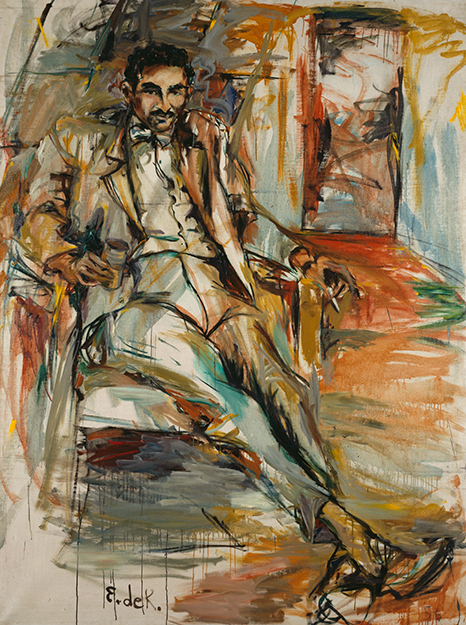Harold Rosenberg 1906–1978
Elaine de Kooning (1918–1989)
Oil on canvas, 1956

National Portrait Gallery, Smithsonian Institution;courtesy Elaine de Kooning Trust
Like 1950s American culture generally, Abstract Expressionism was a boys’ club. Yet women did break through to gain a reputation on their own terms. Elaine de Kooning, although married to artist Willem de Kooning, forged her own way in the art world. (She was independent in marriage as well, living apart from Willem for long periods.) As a student she resisted abstraction, preferring figurative work; as a critic she argued against the idea that non-abstract art was retrograde. Using broad, slashing strokes, she gestured at abstraction and gave a vigorous energy to her figurative portraits, as in this image of writer Harold Rosenberg. While Willem hid the figure beneath layers of abstraction, Elaine emphasized it through her brushstrokes and by keeping the image to the front of the picture plane—a foregrounding that was, ironically, an essential tenet of Abstract Expressionism.

